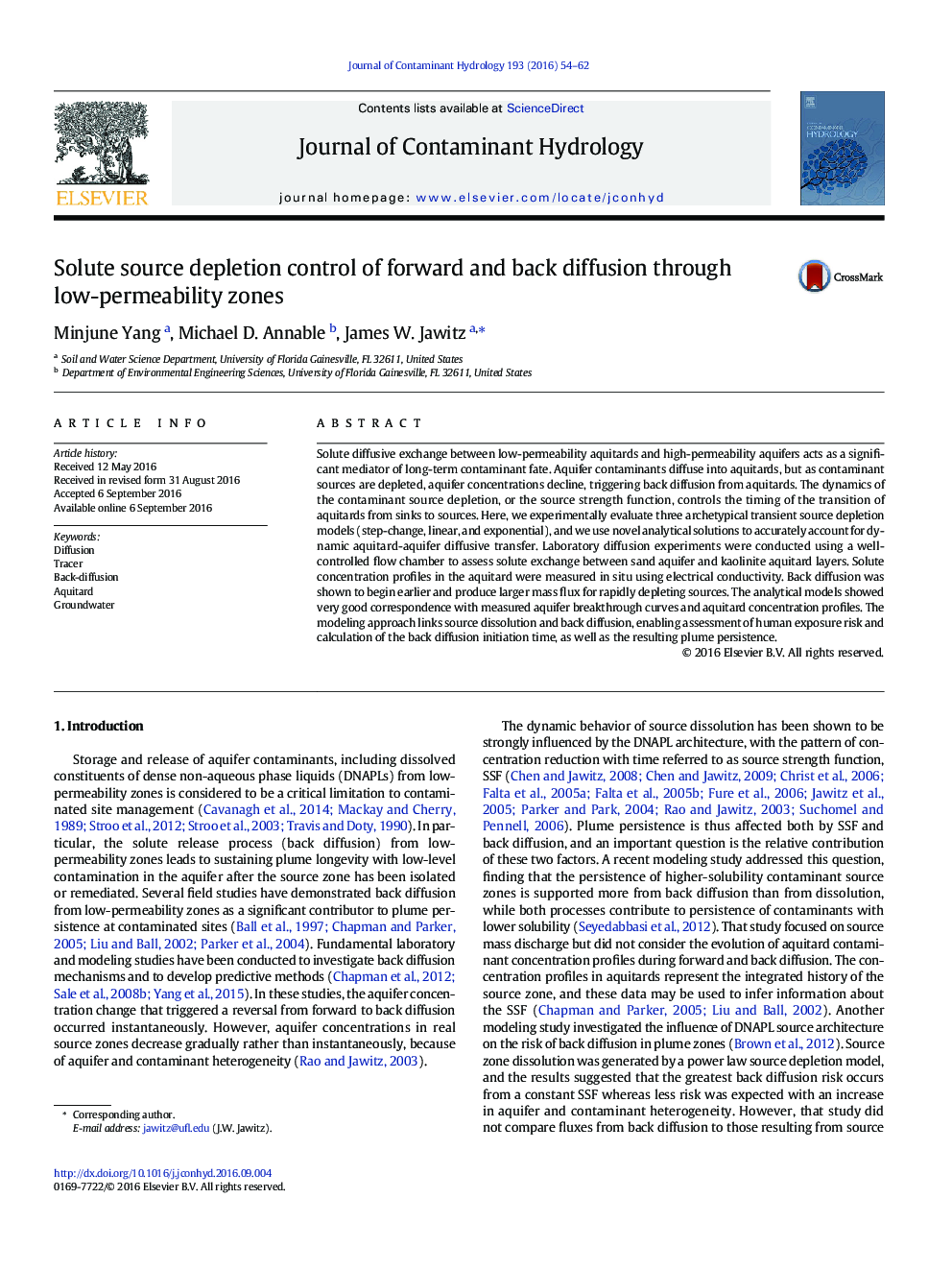| Article ID | Journal | Published Year | Pages | File Type |
|---|---|---|---|---|
| 4546332 | Journal of Contaminant Hydrology | 2016 | 9 Pages |
•An experimental and modeling study of solute transport and diffusion in a two-layer aquifer/aquitard system•In situ electrical conductivity measurement of solute concentration to quantify solute diffusion in clays in laboratory experiments•Three types of injection concentration boundary conditions: step change, linear decrease, and a CSTR for exponential decrease•One-dimensional analytical solution for solute diffusion through an aquitard and advective transport in an aquifer•Analytical solution in good agreement with experimental data
Solute diffusive exchange between low-permeability aquitards and high-permeability aquifers acts as a significant mediator of long-term contaminant fate. Aquifer contaminants diffuse into aquitards, but as contaminant sources are depleted, aquifer concentrations decline, triggering back diffusion from aquitards. The dynamics of the contaminant source depletion, or the source strength function, controls the timing of the transition of aquitards from sinks to sources. Here, we experimentally evaluate three archetypical transient source depletion models (step-change, linear, and exponential), and we use novel analytical solutions to accurately account for dynamic aquitard-aquifer diffusive transfer. Laboratory diffusion experiments were conducted using a well-controlled flow chamber to assess solute exchange between sand aquifer and kaolinite aquitard layers. Solute concentration profiles in the aquitard were measured in situ using electrical conductivity. Back diffusion was shown to begin earlier and produce larger mass flux for rapidly depleting sources. The analytical models showed very good correspondence with measured aquifer breakthrough curves and aquitard concentration profiles. The modeling approach links source dissolution and back diffusion, enabling assessment of human exposure risk and calculation of the back diffusion initiation time, as well as the resulting plume persistence.
